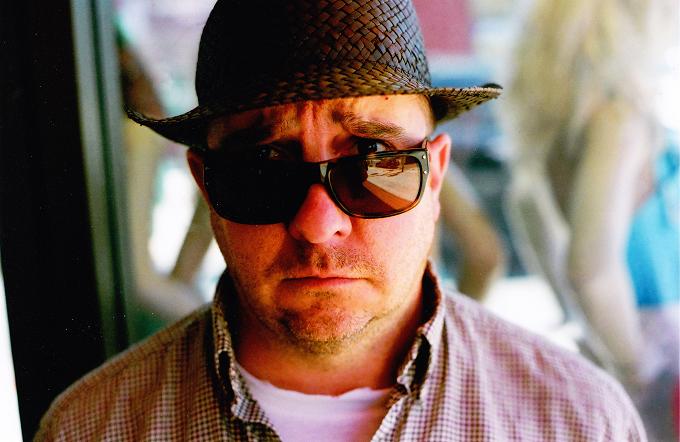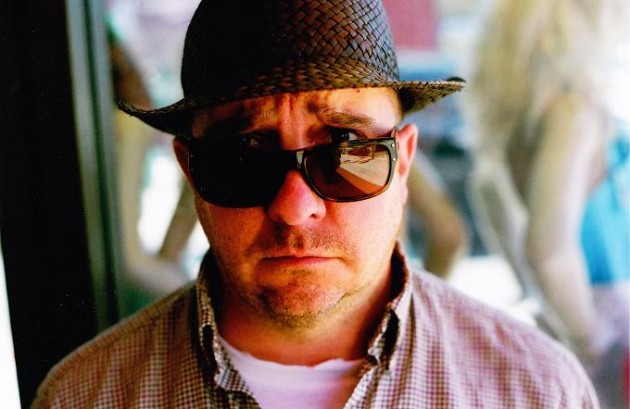Every Magnetic Fields fan has their own Stephin Merrit story, even if they’ve never met the man. He’s the type of musician that inspires that kind of blind loyalty and imaginative associations in his fans and is someone you want to watch because at some point, sooner or later, he’s probably going to do something interesting. As an artist, he’s never really been one to actively foster this type of borderline obsessive fan-love. He does what he does and the results seem to baffle him as much as they enthrall his fans. It goes without saying that the perceived reclusive nature of the man only adds to his already considerable inscrutability.
With the release of their 10th full-length, Love at the Bottom of the Sea, Merrit and Co. forgo the expectations of trying to release another 69 Love Songs and come away with a brisk collection of memorable pop songs, with nods to both their past work and to some future point in the bands musical trajectory. With allusions to pining away for love (Andrew In Drag”) and Merrit’s usual satirical play on words (“I’d Go Anywhere With Hugh”), Love at the Bottom of the Sea strikes a familiar chord in regards to its predecessors but finds The Magnetic Fields looking forward in these same sounds. We may recognize the tone and timbre but this album seems to show the band in a far looser and more comfortable state than on their last few albums.
Recently Stephin and pop co-conspirator Claudia Gonson, who plays piano, sings, and is also the manager for the band, sat down and answered a few of our questions concerning the new album and how some of the inner-band relationships work. As usual, Stephin’s impressively sardonic nature is clear and at the forefront.
Beats Per Minute (Joshua Pickard): 2008’s Distortion was layered with waves of feedback and 2010’s Realism hinged on the perception of the naturalistic sound of its music. Did you consciously think, “Hey, I think I’ve done just about all I can do here. I need to move on.”? Or was the movement to the next album not related to the prior albums?
Stephin Merrit: Distortion and Realism were conceived as a contrasting pair, as well as part of the no-synths trilogy. I often make a record in counterpoint to the previous record. It’s fun.
BPM: With Love at the Bottom of the Sea, was there any pressure from fans, or from yourself, to look back to your earlier albums for inspiration? Or was the approach for the new album always determinedly forward-looking? For example, the single “Andrew in Drag” sounds to me like a throwback to the joyful pop nuggets of “69 Love Songs” and your earlier albums.
SM: If I felt pressure to return to a previous idea, I would ignore it. What could be more useless? Even Roxy Music, whose style shifted extremely slowly over a decade, would never have reverted to an earlier style. How depressing!
BPM: When you go about writing songs like “Andrew in Drag,” “Quick!,” “Your Girlfriend’s Face,” and “I’d Go Anywhere With Hugh,” is there a specific impetus for their birth, such as personal experience, cultural experience, or something else? Do the different aspects of these songs—the melodies, instrumentation, lyricism—come piecemeal or in a rush while you’re still working out the initial threads for each song?
SM: Almost every night I go to my local gay bar and sit in the corner writing songs in my little notebook. I write down the lyrics, but not the melodies, on the ABBA theory that if you can’t remember the melody, no one else will either. What I write about is a mixture of what is happening in the bar — not much — and the disco music playing, and sometimes a little light eavesdropping. Mostly I’m responding to the music I’m hearing. (When I was young I did this at home in front of the television, back when music television was a utility as reliable as running water.)
I write the instrumental arrangements only when I’m about to record the song, often years after I wrote it.

The Magnetic Fields in concert. Photo by Rob Hakimian
BPM: Lyrically, the songs on Love at the Bottom of the Sea range from the mournful (“I’ve Run Away To Join the Fairies”) to the joyously sarcastic (“God Wants Us To Wait”). These are definite touchstones of what we’ve come to consider Magnetic Fields songs. Were these specific emotional marks you were trying to hit when you first approached the album? Or was it more an innate evolution as the songs progressed?
SM: Emotional content is an aspect of music I might consider when sequencing an album, so I don’t place two apparently happy songs in a row, etc. Otherwise, I let it be in the ear of the listener.
BPM: When it came time to get in the studio and record these songs, were they mostly finished or was there a good deal of studio adjustments as the recording progressed? Any of-the-moment changes that presented themselves as you were recording?
SM: Last-minute changes may include the singer and the tempo, which are easy changes, but anything more complex will mean shelving the song.
BPM: When you’re working out these early ideas for songs, the bare melodies or just a line of lyrics, is there a particular way that you filter and catalogue them out into songs? Do you ever use anyone or anything as a sounding board or is it all done internally?
SM: I find it impossible to use anyone as a sounding board without them making suggestions–which destroys the work. So I never ask for opinions.
BPM: Bands sometimes have to wade through dozens of tracks before they arrive at the sequencing that makes the final cut for the album. Were there any songs that had to be excised for the new record or were these fifteen tracks always going to make up the body of Love at the Bottom of the Sea?
SM: “When Next in Love I Fall” was finished too late for inclusion, so it’s the B-side of “Andrew in Drag.”
BPM: This is a question for Claudia. Seeing as how you’re the full-time manager, as well as a member of the band, does that ever create an odd dichotomy when interacting with the band or Stephin in business decisions?
Claudia Gonson: Stephin and I have been working together since we were teenagers, so we have a well-oiled system. We can challenge the other in their arena (me: business, him: art) but when it comes to final decisions, we can pull rank and say “this is what I do, let me do my job.” So, I can advise him on how an album is sounding, but in the end, that’s Stephin’s arena. Stephin can advise me on a contract point, and because he’s my client, he can insist on things, but in the end he defers to my managerial knowledge. I’m glad he’s not interested in the business end at all; it makes it very easy to work for him. As for being a musician and a manager, I don’t have any specific examples of times that being a musician has conflicted with being a manager except that my band has asked me to put my manager-side away when we are on stage. For example, I should not work on the guest list while at sound check. Over the years, I have learned to try not to do the two jobs at once, for the band’s sake.
I also asked Claudia and Stephin about some of the artists they’ve been listening to lately. I asked if they’d care to create a “paper mix” of artists they’ve been listening to in their off time. And while Claudia abstained, due to the nature of her recent music habits (read: kids), I did get some interesting responses from Stephin. Though not a mix per se, here’s what he had to say:
SM: On my just completed eleven-day cross-country drive, I listened many times to a Tom Petty & the Heartbreakers comp. I was driving, so I don’t know the name of it. Ditto with Gil-Scott Heron. Also I listened to Stereolab’s wonderful Emperor Tomato Ketchup, and Kiss’ Destroyer.


